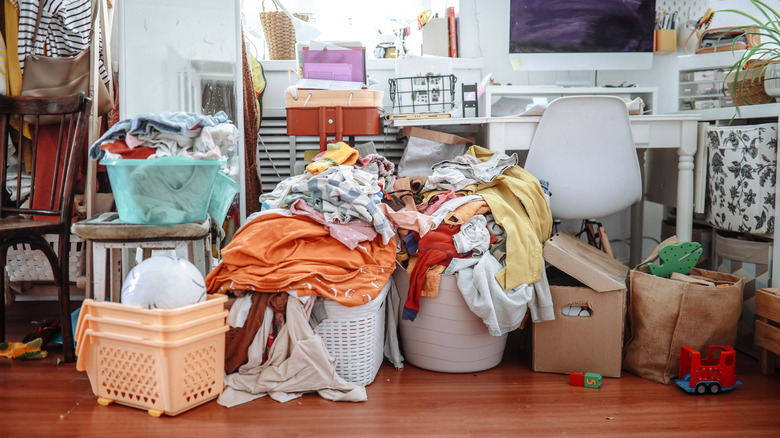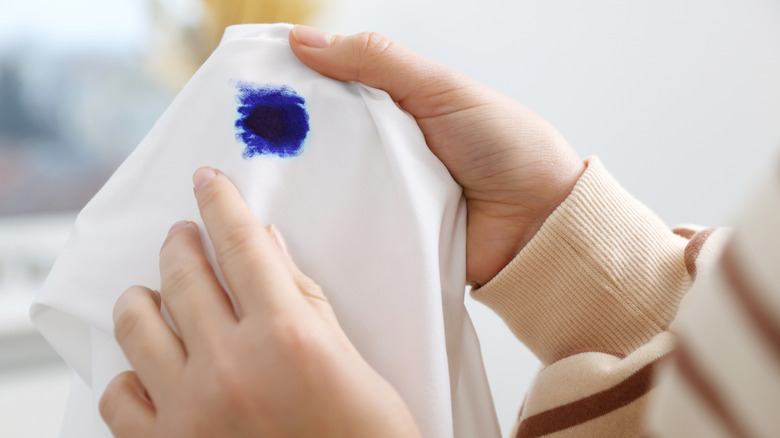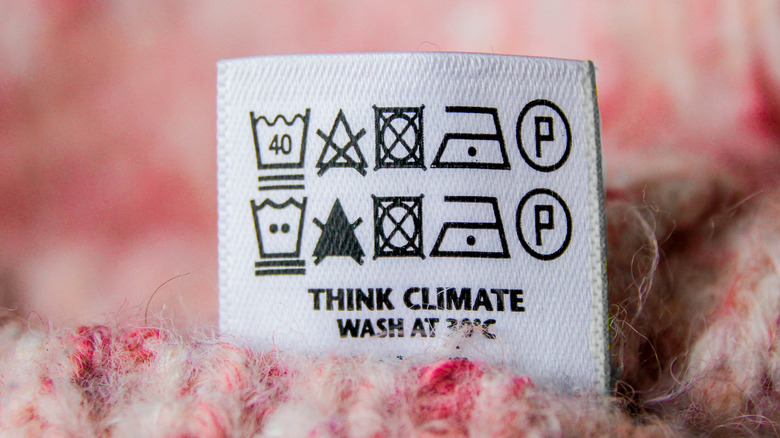Mistakes Everyone Makes When Sorting Laundry
Sorting laundry can feel like a chore that's more complicated than it needs to be. Who has the time to fuss over piles of clothes when there's Netflix to watch or snacks to eat? But here's the thing: cutting corners when sorting laundry can result in your favorite white T-shirt having a bad run-in with a red sock. Most of us are guilty of two big laundry sins: not sorting enough and ignoring care labels.
Separating laundry into "whites" and 'everything else" doesn't cut it. You might avoid turning your white T-shirts pink, but what about fabric weight? Tossing heavy items like towels or jeans with delicate fabrics can spell disaster. A good sorting system involves creating separate piles: one for whites, one for darks, one for brights, and one for delicates. If you want to level up, sort by fabric type –- heavy items in one load and lighter ones in another. You can even sort by level of dirtiness, a hack that will prolong the life of your detergent.
Another mistake people make when sorting laundry is ignoring care labels. Don't let the care label be a mystery; it's there for a reason. Take the classic "hand wash only" label. Ignore it, and your favorite blouse might come out of the washer looking like it belongs to a doll. Then there's "cold water only." Sure, hot water sounds better for killing germs, but it can cause certain fabrics to shrink or lose their shape. Paying attention to care labels can save you from a lot of regret. Take a minute to check the tag before tossing clothes in the wash.
Why mixing fabrics can ruin your clothes
Mixing fabrics in the washing machine can seem like an easy shortcut, but it's a huge mistake that can ruin your clothes. When you wash clothes made from different fabrics together, they don't all behave the same way in the wash. Take color bleeding, for example: when you throw dark-colored fabrics like jeans in with lighter-colored clothing, there's always a chance that the dye from those dark items will bleed onto your lighter clothes. This can leave your favorite white T-shirt with unintentional pink or blue stains, and that's a hard mess to fix. While vinegar can keep colors from bleeding in your laundry, sorting items by color is an even safer option.
Mixing fabrics can also damage more delicate items. Imagine your delicate silk blouse getting tossed in with a heavy towel. The rough texture of towels can snag and tear the delicate fabric of your blouse, leading to holes or even permanent damage. To prevent this, always wash delicate items separately or in a mesh bag so they stay safe and protected.
In addition to color bleeding and fabric damage, mixing fabrics can cause uneven cleaning. Heavier fabrics like towels, sheets, or jeans absorb more detergent and water, leaving lighter fabrics like T-shirts or blouses with less soap and water. This uneven distribution can lead to poorly cleaned clothes and, in some cases, lingering odors. Separating fabrics by weight and texture ensures that each piece of clothing gets the right amount of detergent and water, leading to better overall cleaning and fresher-smelling clothes.
Common care labels found on clothes
If you've ever stared at a care label and wondered what all those symbols mean, you're not alone. One of the most common care labels is the "hand wash only" label, which often looks like a hand over a tub filled with water. This label is usually found on delicate fabrics like lace, silk, or wool. Handwashing helps maintain the texture and shape of delicate fabrics that may not hold up well in a washing machine.
Another common label is "do not bleach," which shows a black triangle with an X through it. Using bleach on fabrics that aren't meant to handle it can cause them to discolor or weaken. Even bleach labeled "color-safe" can cause problems for some fabrics. Try a gentle stain remover or a natural alternative like baking soda on stains instead. A white triangle with an X through it means to only use non-chlorine bleach, while a triangle with no X means it's safe to bleach.
Finally, many clothes will have the "tumble dry low" label. This symbol is a circle inside a square with one dot in the center. Following this instruction is essential because high heat from the dryer can shrink fabrics or damage materials. Tumble drying on a low setting is gentler on your clothes and helps them maintain shape. If your care label says "do not tumble dry" (or has an X over a circle inside a square symbol), air drying is always the safest option. Check out our guide to laundry codes, which will help you further understand your care tags when sorting clothes.


